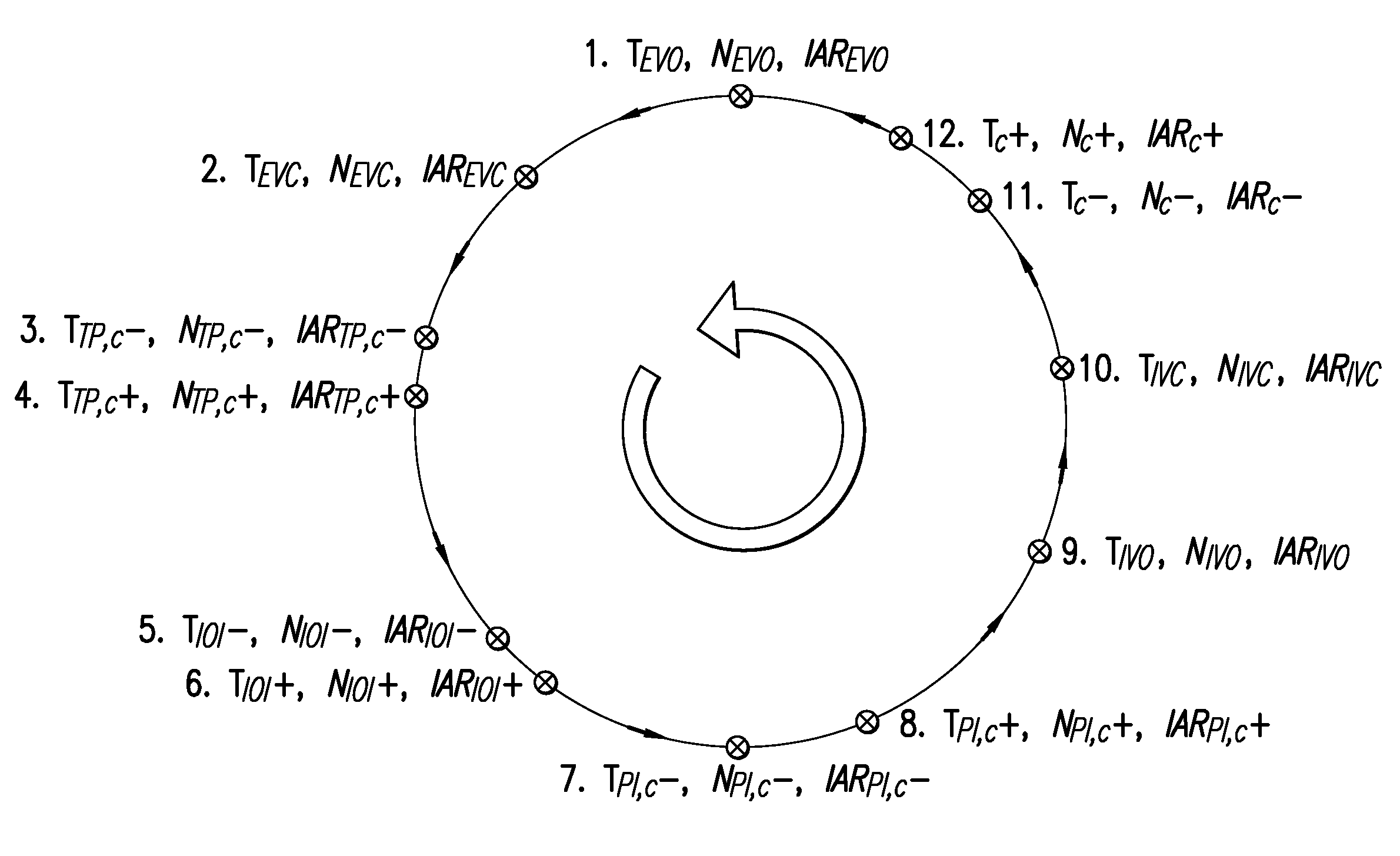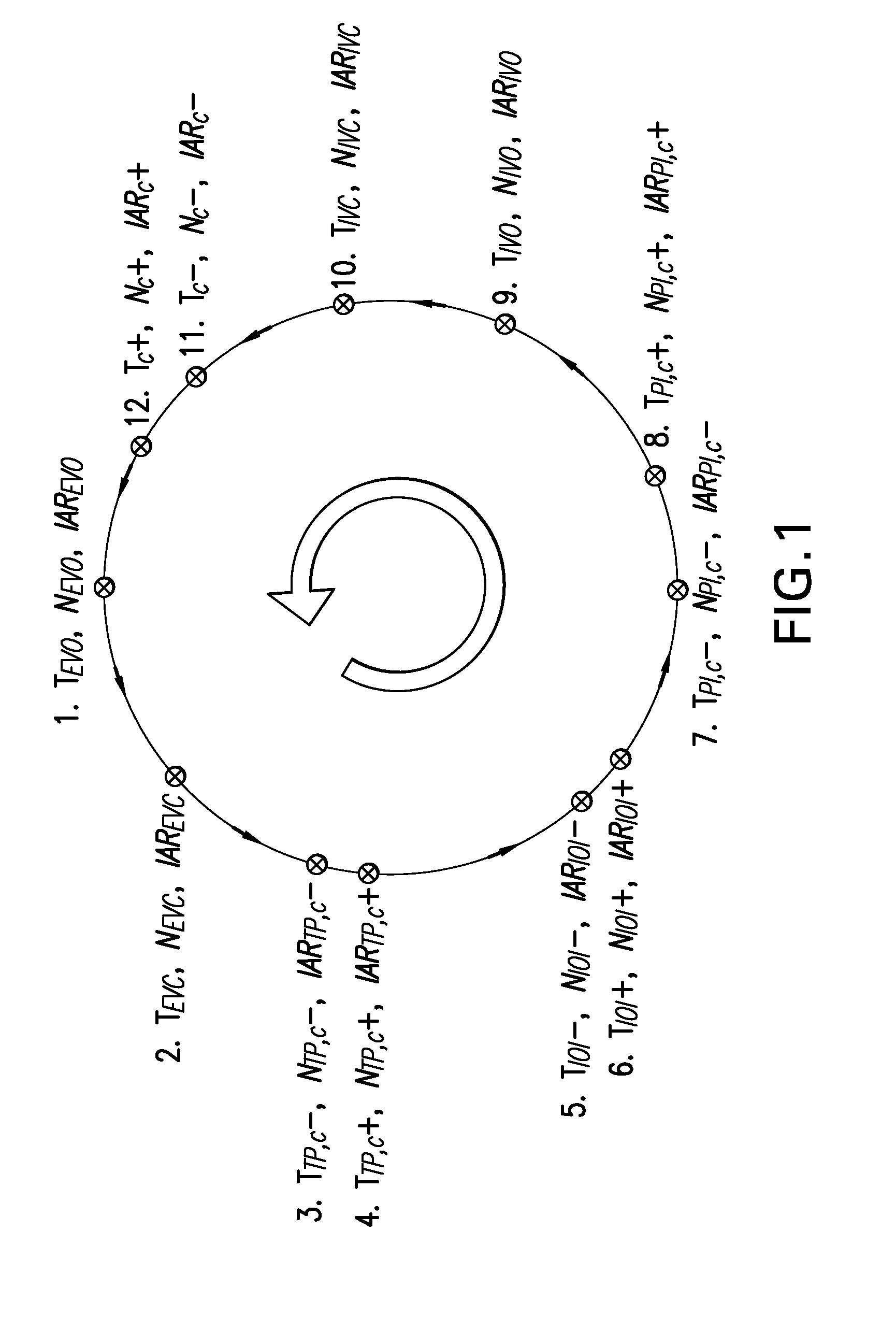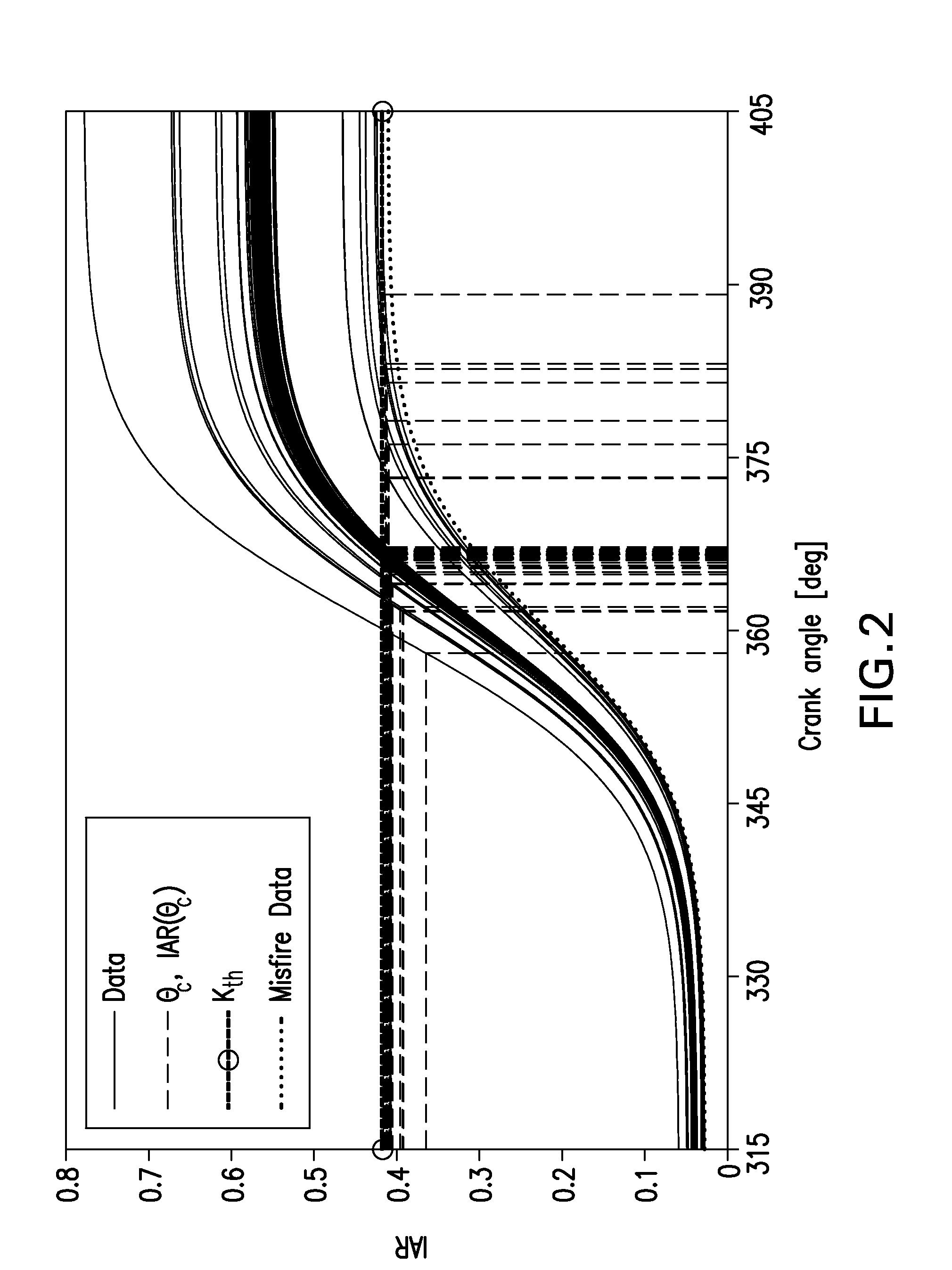Prediction and estimation of the states related to misfire in an HCCI engine
a technology of misfire and prediction, applied in the field of methods of predicting misfire, can solve problems such as stalling of engine operation
- Summary
- Abstract
- Description
- Claims
- Application Information
AI Technical Summary
Benefits of technology
Problems solved by technology
Method used
Image
Examples
example simulation
[0076 Results for the Method
[0077]FIG. 4 shows the value of IAR with the parameters in Table 1 as a function of the crank angle in degrees. All curves represented on this figure are the result of a misfire in the first cycle (note that the value of IAR(θ)th during the nominal compression / expansion strokes). During the compression stroke in the trapping phase, the integrand of IAR takes on a highly positive value again and for some trajectories, combustion occurs in the trapping phase, where IAR(θ)≈Kth,2=0.5958. Lines denoted by reference character (B) in FIG. 4 are data points where a misfire occurred, but a combustion occurred in the trapping phase (recovery); lines denoted by reference character (R) in FIG. 4 are data points where a misfire occurred without a trapping phase combustion.
[0078]As described earlier, in case of misfire, instead of decreasing the amount of EGR, it is necessary to increase the amount of EGR to keep more thermal energy inside of the cylinder. The followin...
PUM
 Login to View More
Login to View More Abstract
Description
Claims
Application Information
 Login to View More
Login to View More - R&D
- Intellectual Property
- Life Sciences
- Materials
- Tech Scout
- Unparalleled Data Quality
- Higher Quality Content
- 60% Fewer Hallucinations
Browse by: Latest US Patents, China's latest patents, Technical Efficacy Thesaurus, Application Domain, Technology Topic, Popular Technical Reports.
© 2025 PatSnap. All rights reserved.Legal|Privacy policy|Modern Slavery Act Transparency Statement|Sitemap|About US| Contact US: help@patsnap.com



